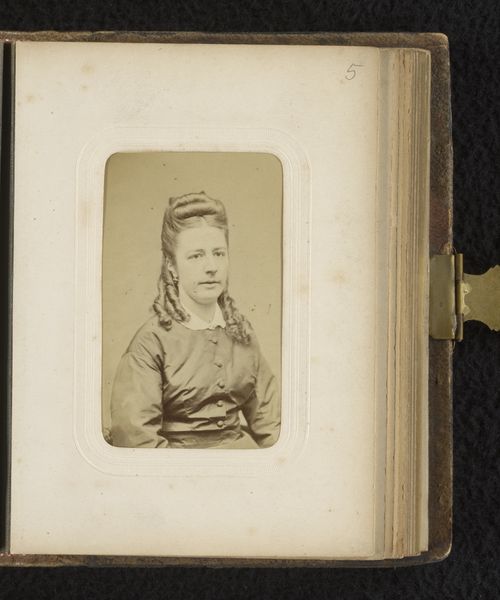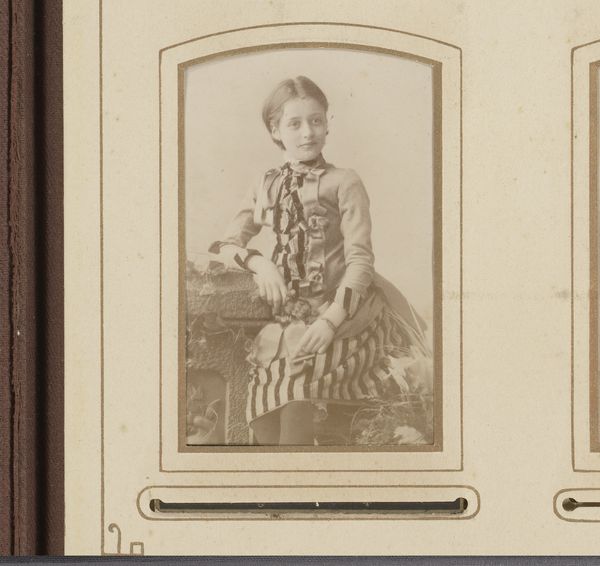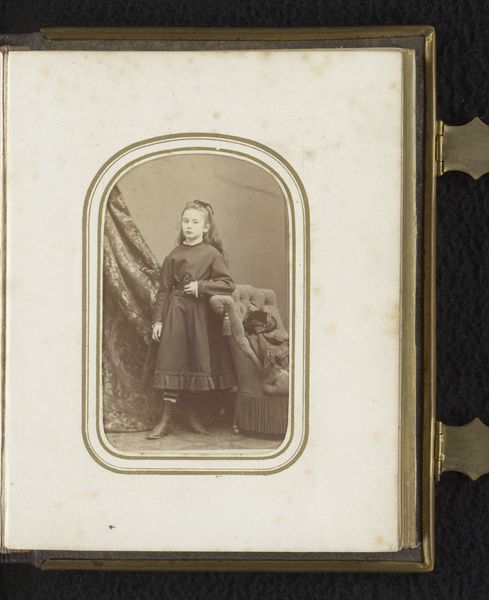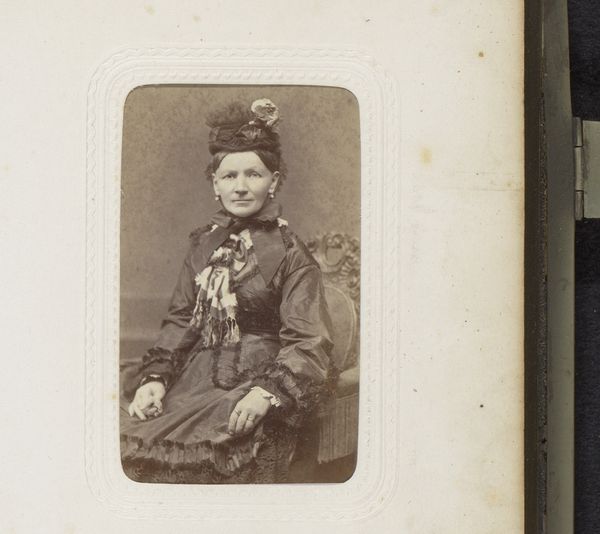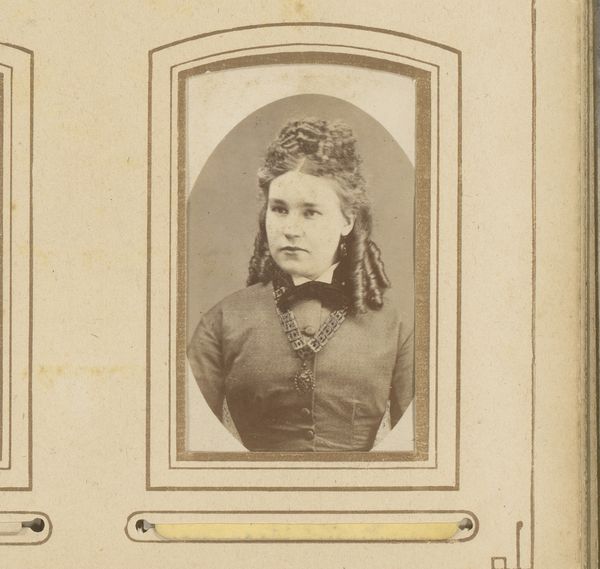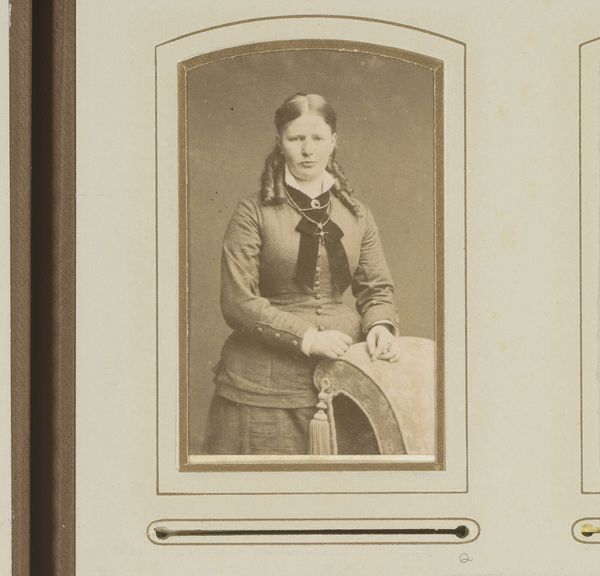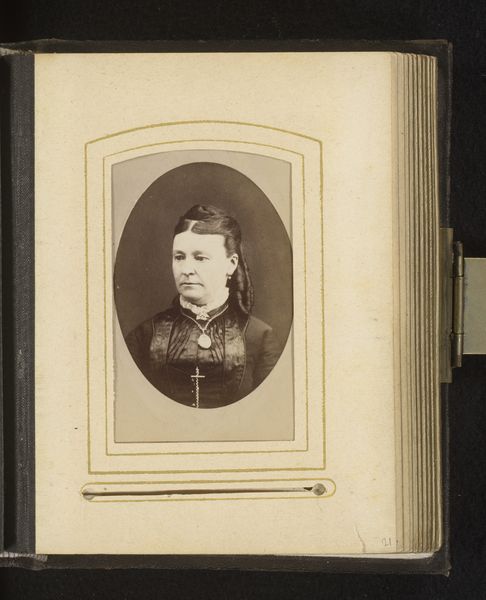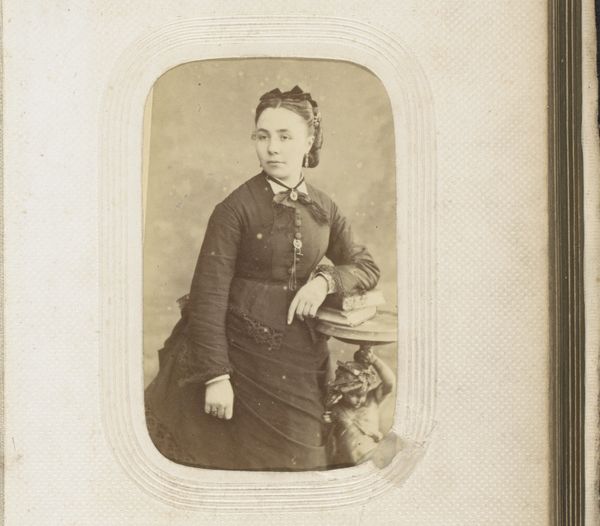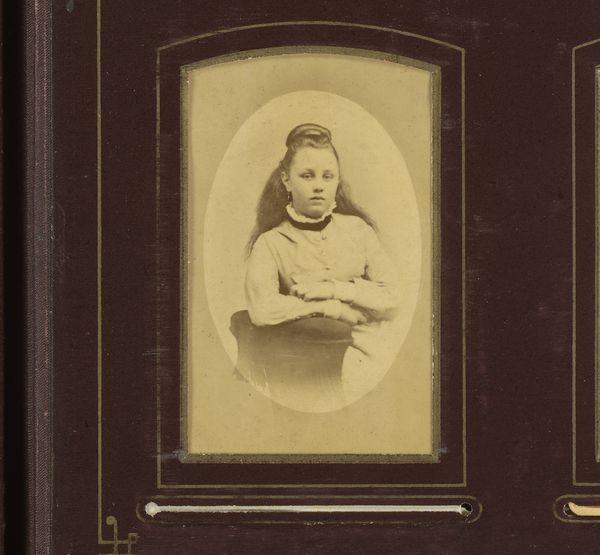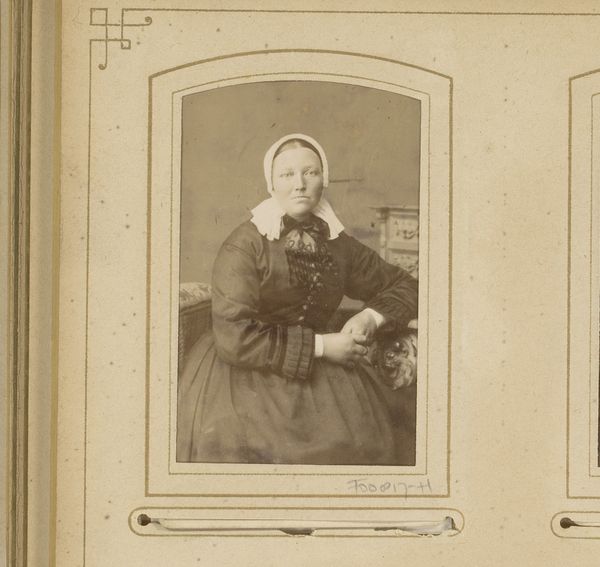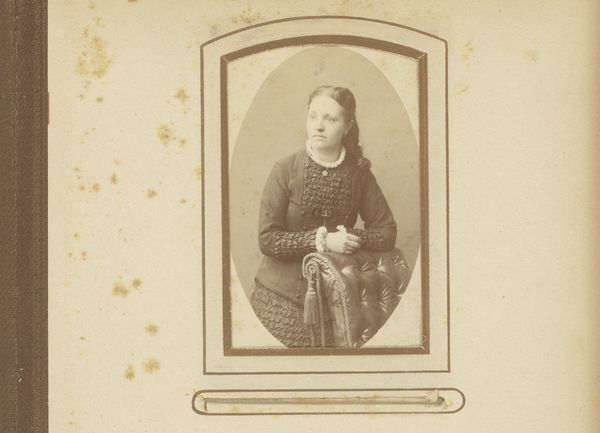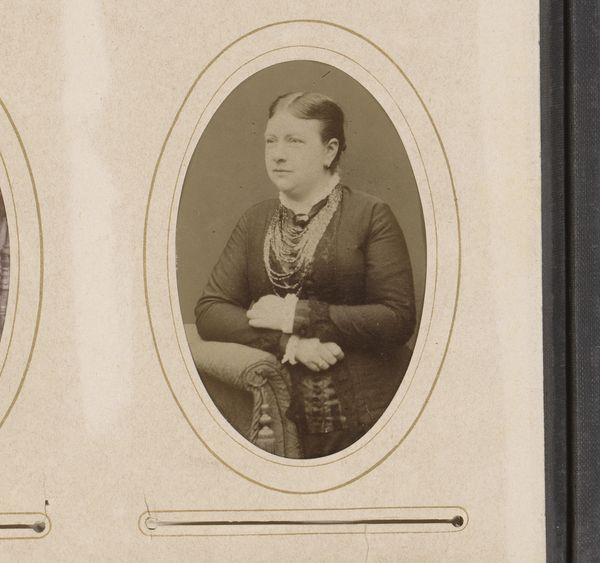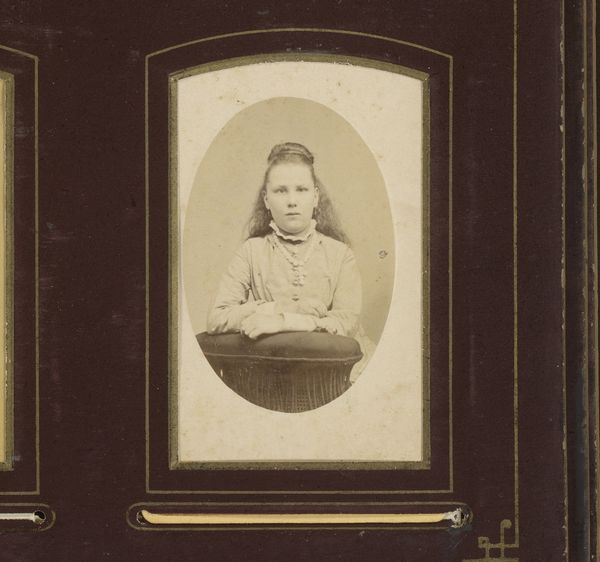
photography
photography
19th century
Dimensions: height 82 mm, width 50 mm
Copyright: Rijks Museum: Open Domain
Editor: Here we have a photograph, "Portret van een jonge vrouw met pijpenkrullen" which translates to "Portrait of a Young Woman with Curled Hair" by François Hermans, created sometime between 1873 and 1892. It's a simple portrait, and her gaze is steady, but something about her dress feels almost restrictive. What do you see in this piece? Curator: What I see is a complex negotiation of identity, class, and the evolving role of women in the late 19th century. The rigid posture, combined with the ornate details of her dress, speak to the constraints placed on women of that era. But there's also a quiet defiance in her eyes, a sense of self-possession. How might her clothing also act as a form of self-expression? Editor: I hadn't thought about it that way. I was so focused on what felt restricting, I didn’t consider the expression through it. Do you think the emerging medium of photography had an impact on how women chose to represent themselves? Curator: Absolutely. Photography offered a new avenue for women to claim agency over their own image. While still operating within societal norms, photographic portraits allowed for subtle subversions of those norms. How does this particular portrait, with its careful attention to detail, speak to the power of visual representation in shaping and contesting social narratives around gender? What do you make of her gaze as an act of asserting her own visibility and personhood? Editor: It’s almost as if she is challenging the viewer to truly see her as an individual and I see what you mean about this agency through visual representation. It's so much more nuanced than I initially perceived. Curator: Indeed. Examining the image in its historical and social context reveals the complex dialogue between subject, photographer, and the broader societal forces at play. It allows us to connect with these figures not as relics of the past but as active participants in shaping their own identities within their time. Editor: I’ll definitely consider all this next time I examine a portrait. Thanks for broadening my perspective.
Comments
No comments
Be the first to comment and join the conversation on the ultimate creative platform.
